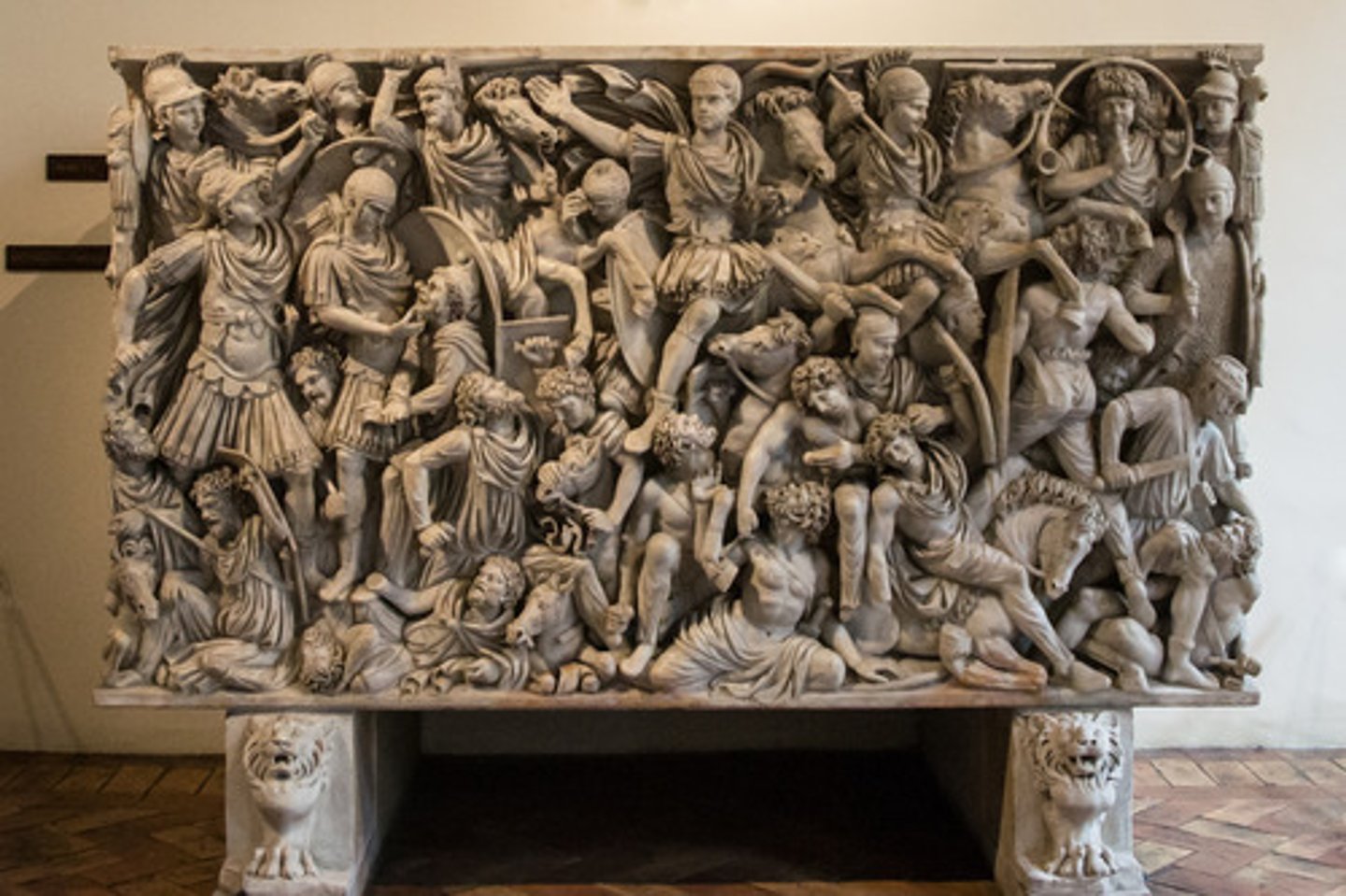Roman Art
1/13
There's no tags or description
Looks like no tags are added yet.
Name | Mastery | Learn | Test | Matching | Spaced |
|---|
No study sessions yet.
14 Terms
- owned by two brothers; both freedmen who made money as merchants
- narrow entrance sandwiched between several shops
- atrium open to sky w/ impluvium in center; cubicula radiate around
- peristyle garden in rear w/ fountain, statuary, and more cubicula; private area of house
- axial symmetry; someone entering can see all the way through to peristyle garden in rear
- exterior of house w/o windows; interior lighting comes from atrium and peristyle
House of the Vettii
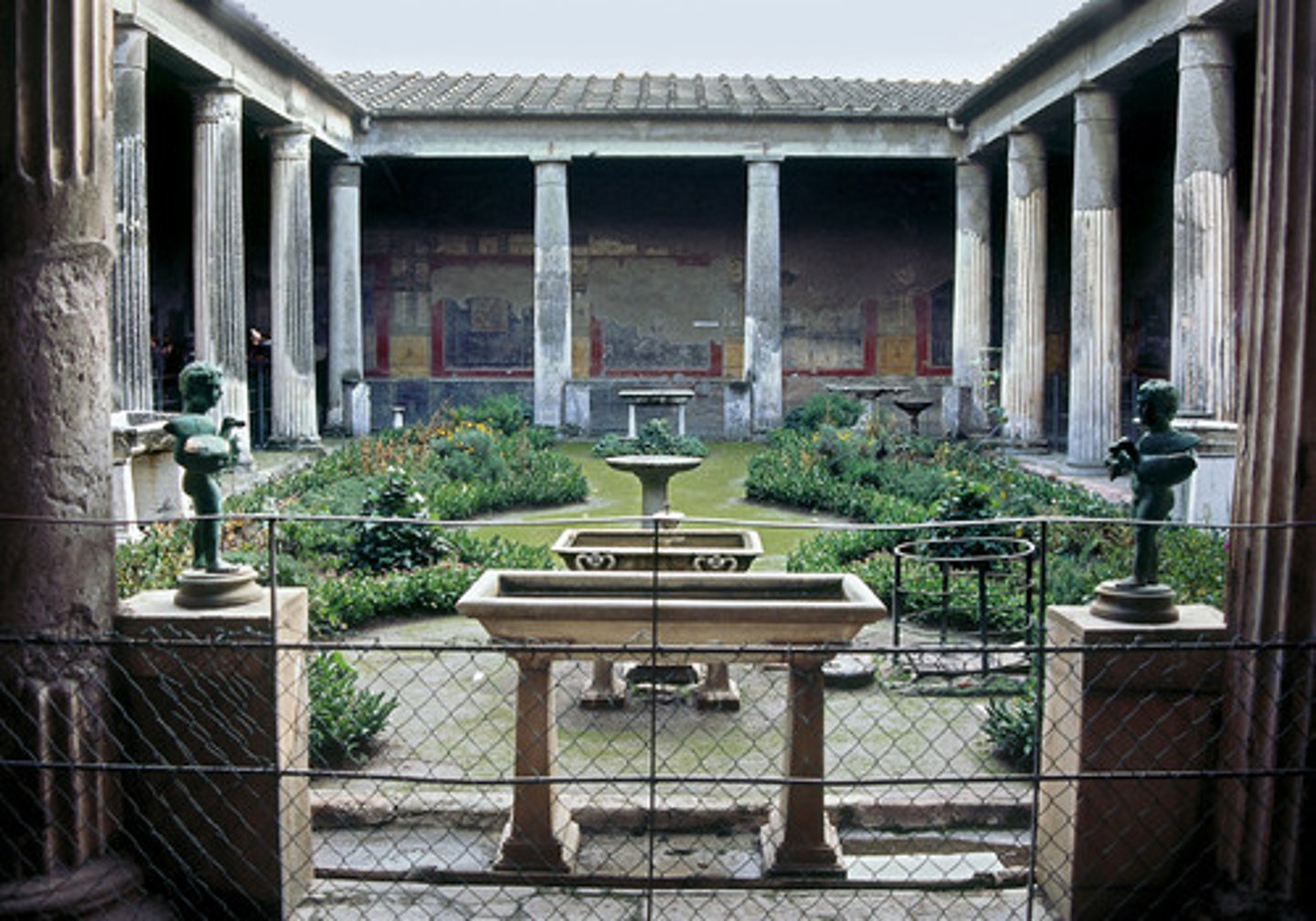
- accommodated 50,000 spectators
- concrete core; brick casing; travertine facing
- 76 entrances and exits circle facade
- interplay of barrel vaults, groin vaults, arches
- meant for wild/dangerous spectacles (gladiator combat, animal hunts, naval battles) but not religious persecution
- facade uses engaged columns: first story Tuscan, second Ionic, third Corinthian, top flattened Corinthian; each thought of as lighter than order below
- above squared windows at top level: small brackets meant to hold flagstaffs; anchors for retractable canvas roof used to protect crowd on hot days
- much of marble pulled off during Middle Ages
Colosseum (Flavian Amphitheatre)
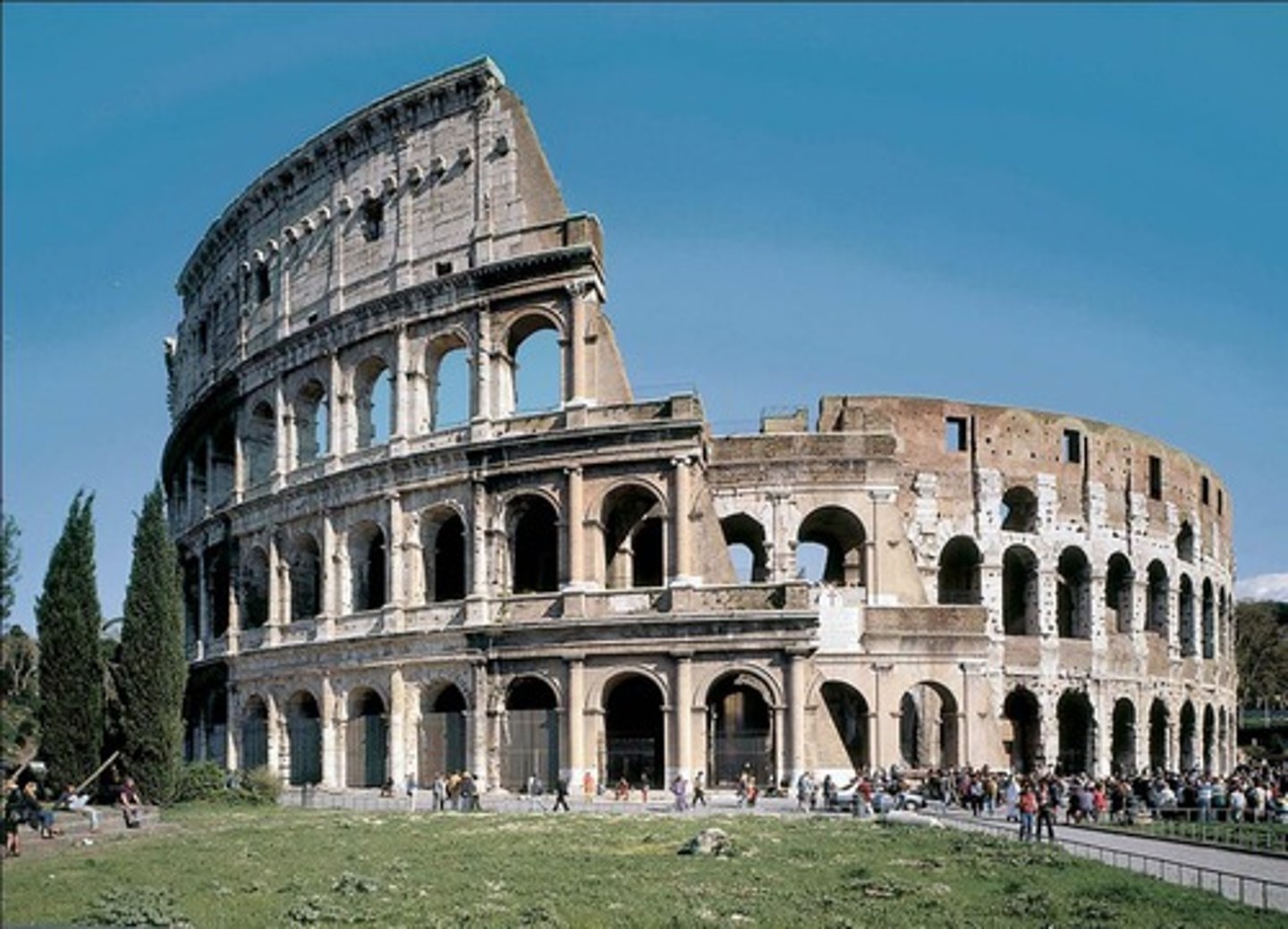
- Petra was central city of Nabataeans (nomadic peoples)
- built along caravan route
- dead buried in tombs cut out of sandstone cliffs
- 500 royal tombs in the rock, but no human remains found; burial practices unknown
- "red rose city"
Treasury, Monastery and Great Temple of Petra, Jordan
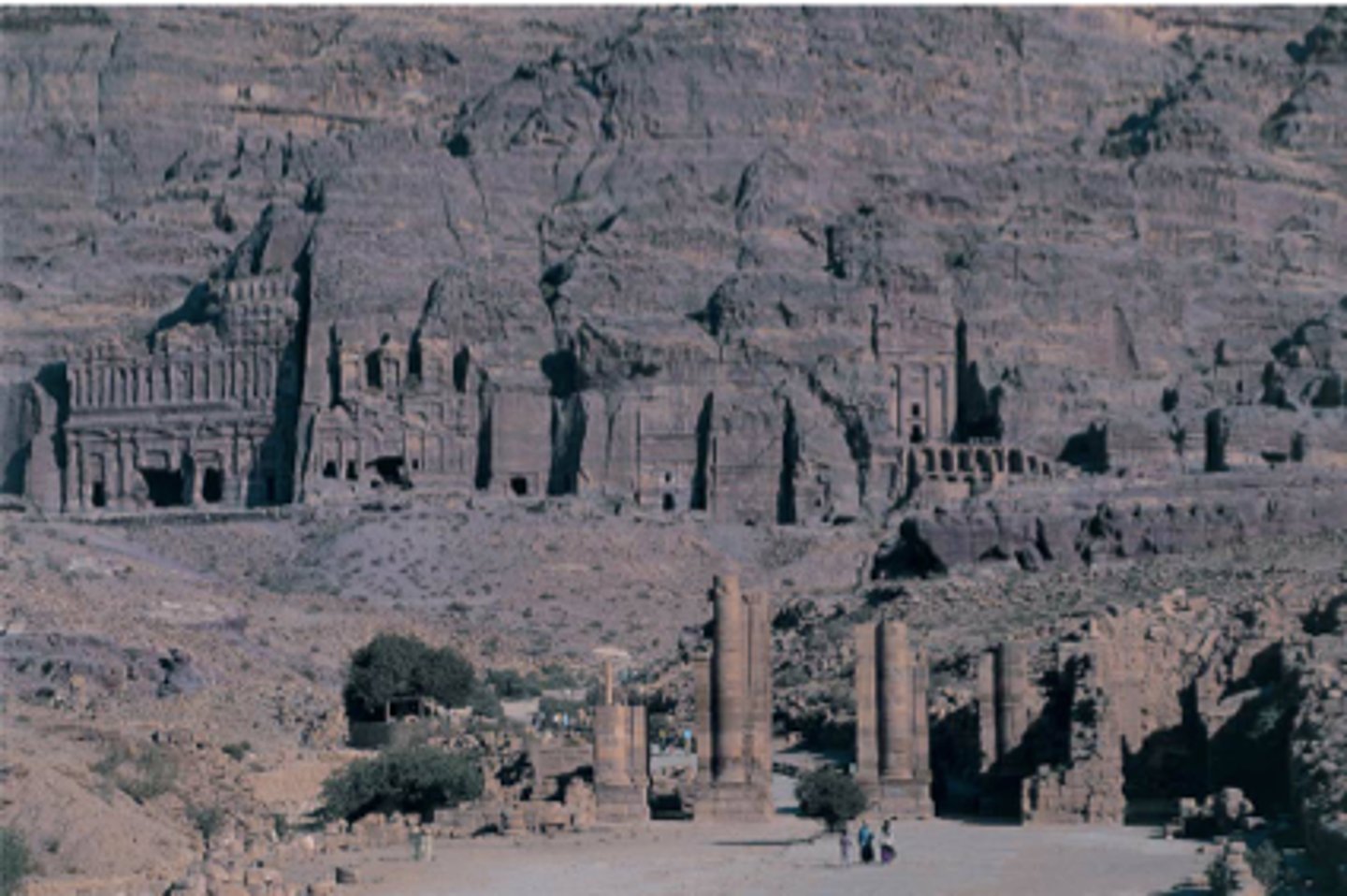
- lower story w/ influence of Greek and Roman temples
- columns not proportionally spaced
- upper floor: broken pediment w/ central tholos
- combination of Roman and indigenous traditions
- Nabataean concept and Roman features
- Greek, Egyptian, Assyrian gods on facade
Treasury at Petra
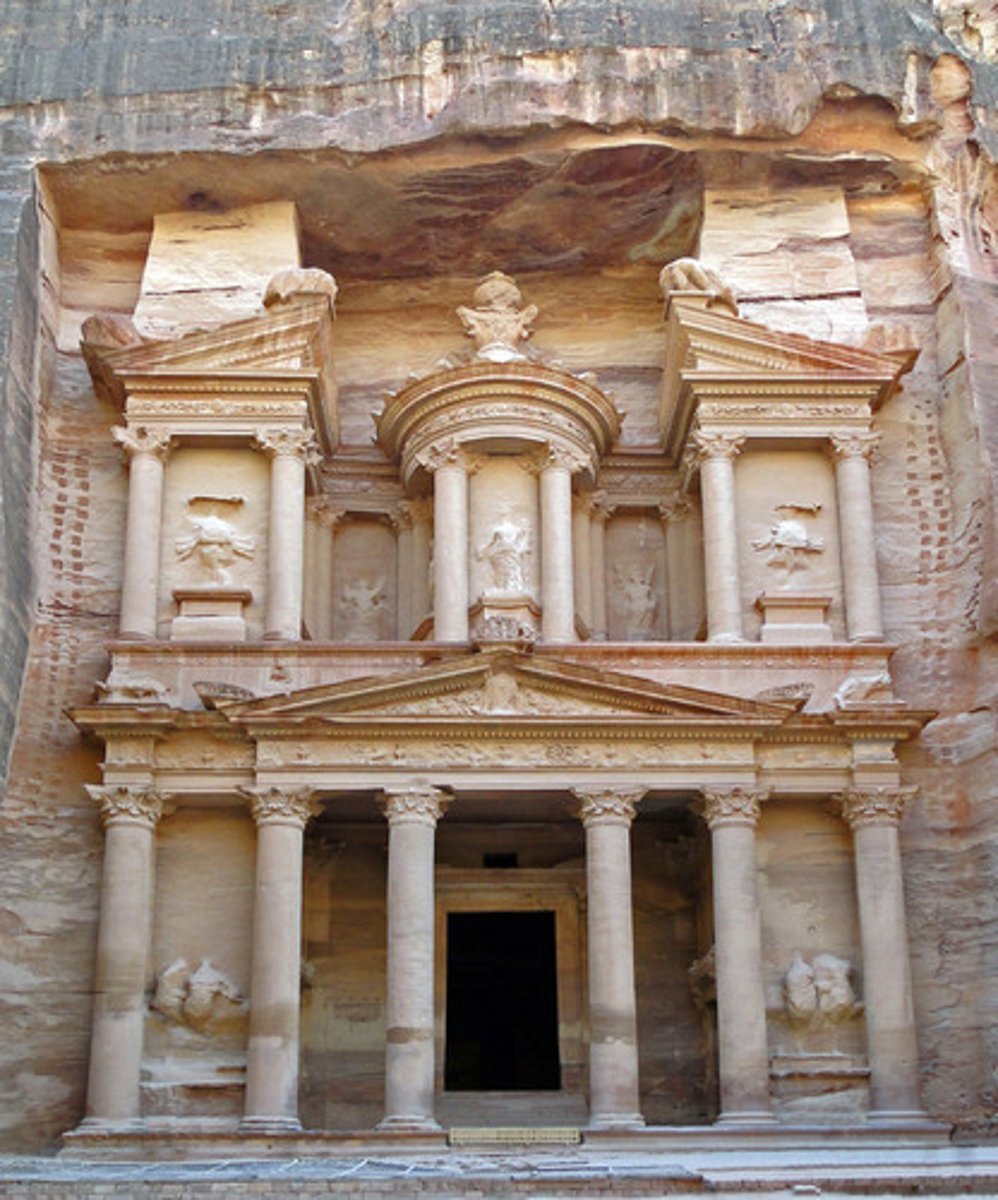
- in sacred precinct on southern citadel hill
- dedicated to Dushara (principal deity; unique to Petra)
-place of worship for a pantheon of deities
The Great Temple at Petra
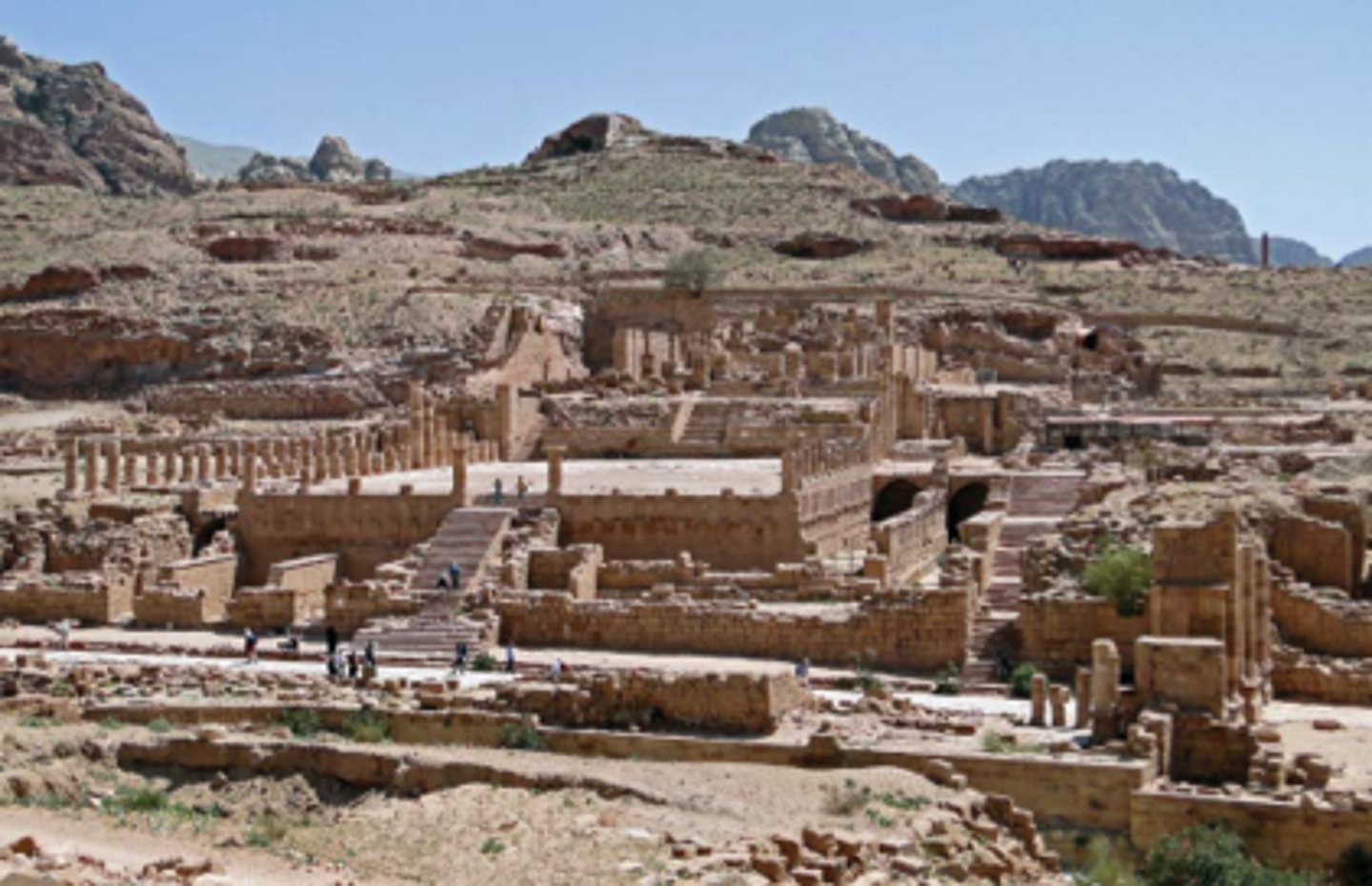
- built w/ booty collected from Trajan's victory over Dacians
- large central plaza flanked by stoa-like buildings on each flank
- originally held equestrian monument dedicated to Trajan in center
- part of complex that included Basilica of Ulpia, the Markets of Trajan, and the Column of Trajan
Forum of Trajan
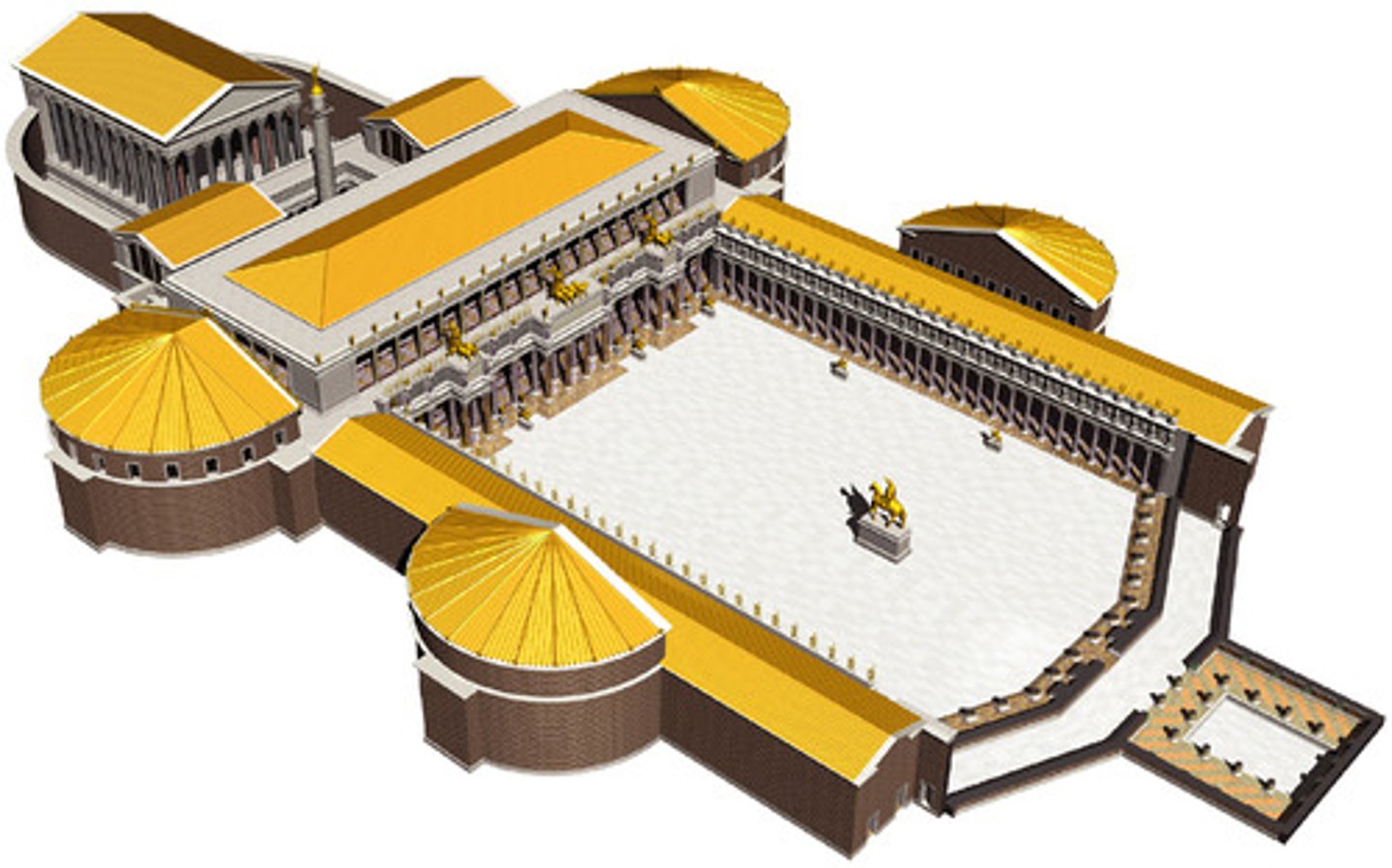
- 385 ft by 182 ft, w/ 2 apese; grand interior space
- nave spacious and wide
- double colonnaded side aisles
- second floor had galleries or maybe clerestory windows
- timber roof 80 feet across
- law courts held here; apses were a setting for judges
- said to have been paid by Trajan's spoils taken from defeat of Dacians
- Ulpius was Trajan's family name
Basilica of Ulpia
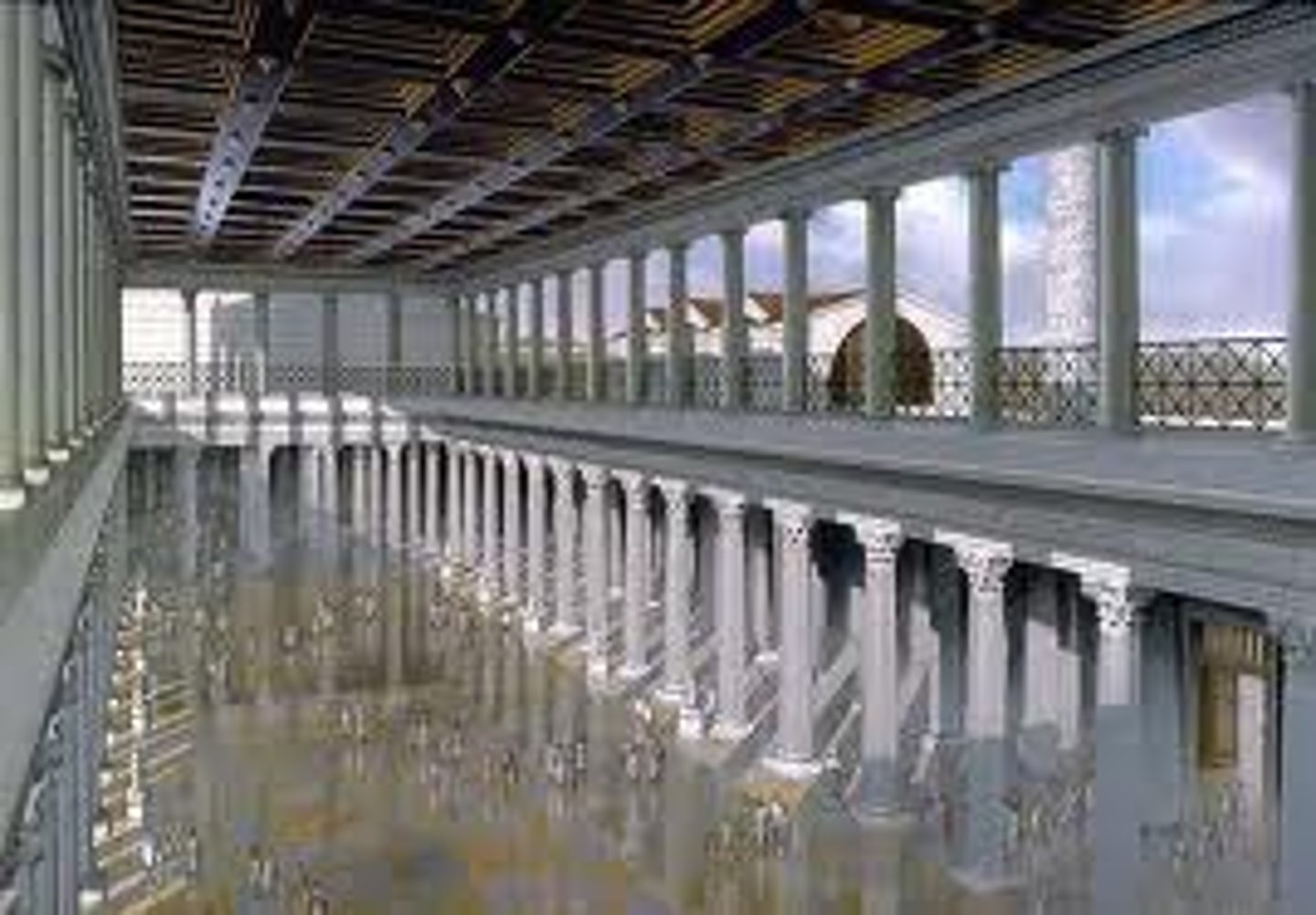
- original had 150 shops
- multilevel mall
- semicircular building held several levels of shops
- main space groin-vaulted; barrel-vaulted shops
Market of Trajan
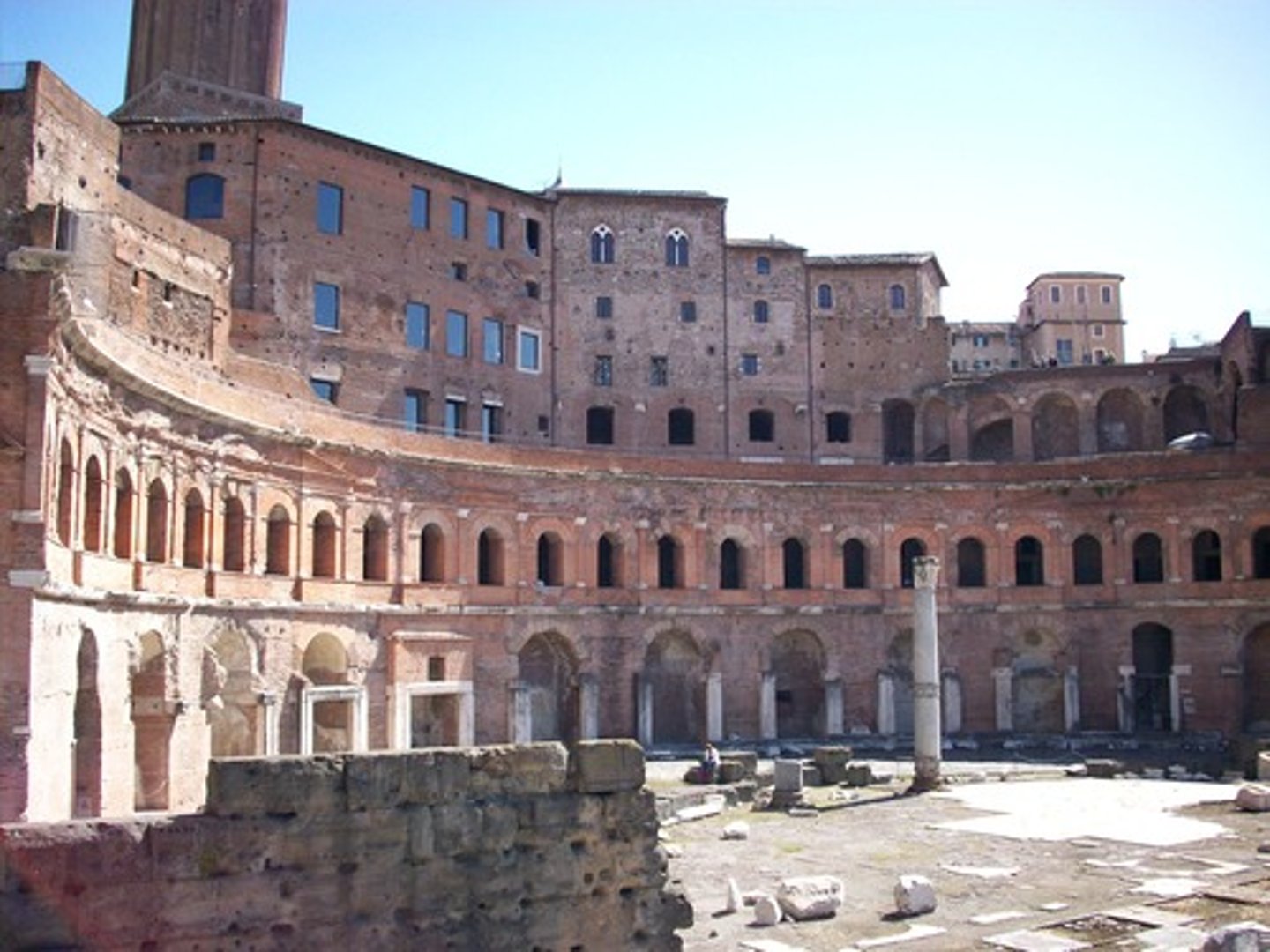
- dedicated to every major deity
- inscription: "Marcus Agrippa, son of Lucius, having been consul three times, built it"
- Corinthian capital porch in front of building
- facade w/ two pediments, one deeply recessed behind the other
- square panels in floor and in coffers contrast w/ roundness of walls; coffers may have been filled w/ bronze rosette designs to simulate stars
- cupola walls enormously thick: 20 feet at base
- oculus 27 feet across: allows for sunlight and air; acts as moving spotlight across interior
- height of building equals width; interior based on the circle
- walls have 7 niches for statues of the gods and represent 7 planets
- walls thenned at top; coffers take some pressure off
- triumph of concrete construction
- brilliantly decorated
- originally had large atrium in front and built on high podium; modern Rome has risen up to it
- large open space to accommodate many people
Pantheon
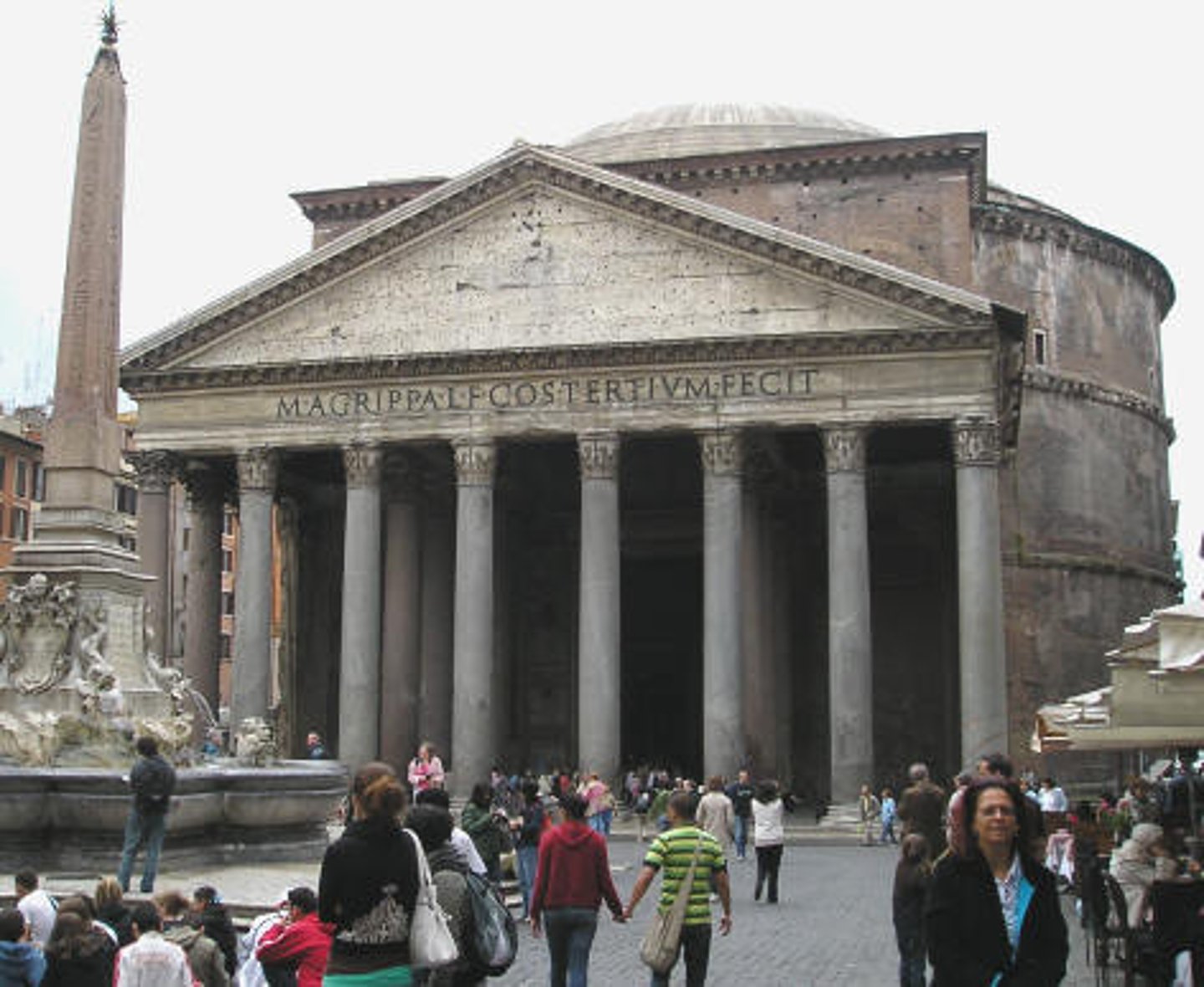
- triclinium: dining room in a Roman house
- main scene death of Greek hero Pentheus
- Pentheus opposed to cult of Bacchus and was torn to pieces by women (including mother) in Bacchic frenzy; two women pulling at his hair in this image
- architecture seen through painted windows; imaginary landscape
Pentheus Room
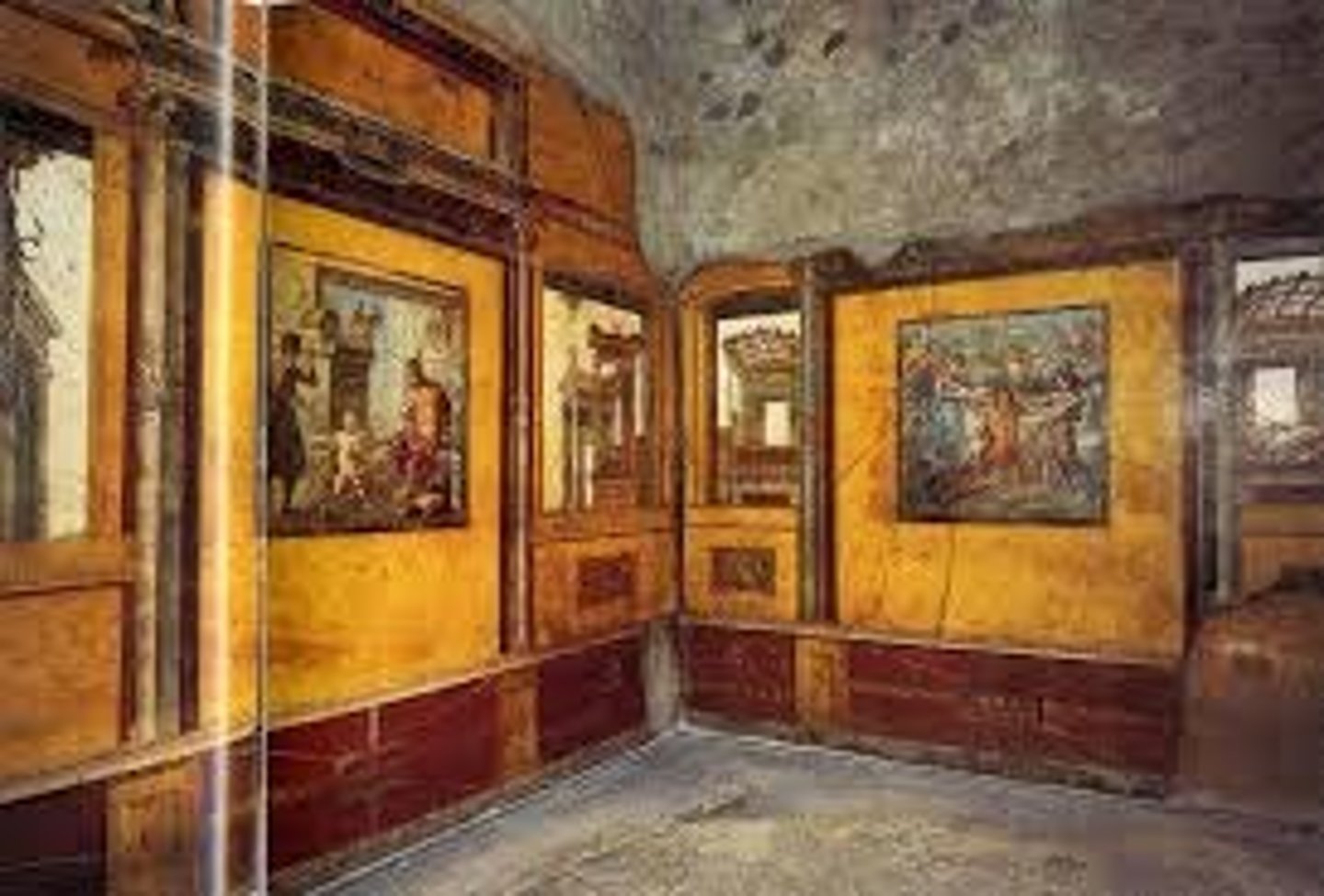
- extremely realistic face (veristic portrait)
- bulldog-like tenacity of features; overhanging flesh; deep crevices in face
- full experience and wisdom
- features may have been exaggerated by artist to enhance adherence to Republican virtues
- busts mostly of men, depicted as elderly
Head of a Roman Patrician
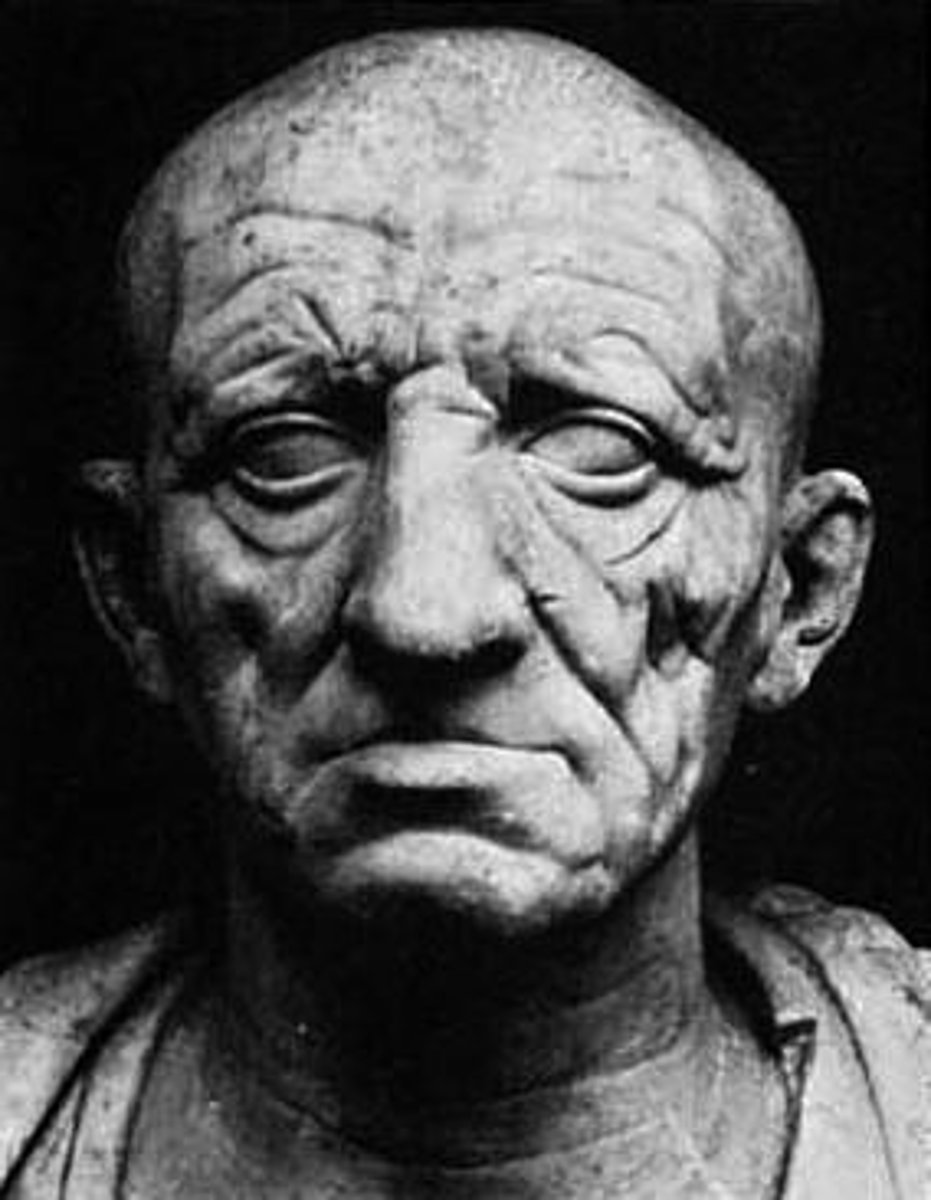
- idealized
- contrapposto
- confusion between god and man intentional; sense of divine rule
- standing barefoot indicates he is on sacred ground
- breastplate number of gods participating in return of Roman standards from the Parthians
- breastplate indicates he is a warrior; judge's robes show him as a civic ruler
- back not carved; meant to be placed against a wall
- characteristic of Augustus: part in hair over left eye and two locks over right
- may have carried sword, pointing down, in left hand
- right hand in Roman orator pose
- at base: Cupid at back of dolphin; reference of Augustus's divine descent from Venus
- found in Villa of Livia (Augustus's wife)
Augustus of Prima Porta
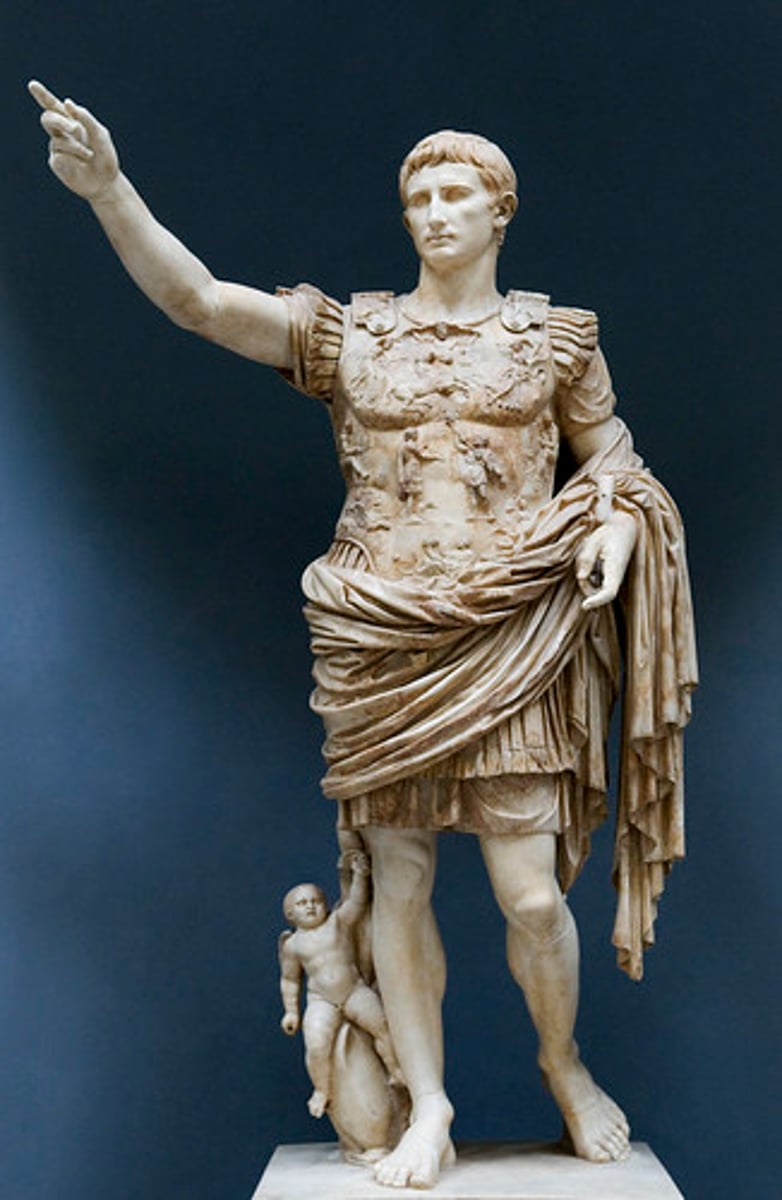
- burial chamber of Trajan (ashes placed in base)
- stood amid Trajan's Forum
- 128-feet high, 625 foot narrative cycle wrapped around
- told story of Trajan's defeat of the Dacians
- 150 episodes; 2500 figures; 23 registers; continuous narrative
- crowded composition
- low relief, few shadows to cloud what must have been very difficult object to view in entirety
- scholarly debate over how meant to be viewed
- meant to be entered; visitor wander up interior spiral staircase to viewing platform
- topped by heroic nde statue of Trajan; now replaced by St. Peter
- view would impress visitor w/ Trajan's accomplishments, including forum and markets
- two Roman libraries containing Greek and Roman manuscripts flanked
- also includes mundane activities
Column of Trajan
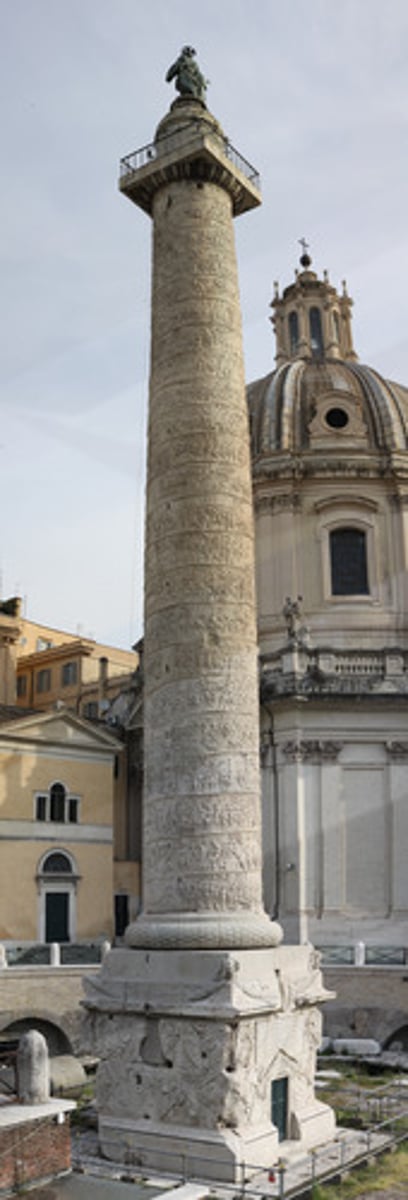
- extremely crowded surface w/ figures piled on top of one another
- lack individuality
- confusion of battle echoed by congested composition
- Roman army trounces bearded and defeated barbarians
- youthful Roman general appears center top w/ no weapons; only Roman w/ no helmet (indicates he is invincible and needs no protection)
- Rome at war throughout third century
- writhing figures
- emotional expressionism
Ludovisi Battle Sarcophagus
